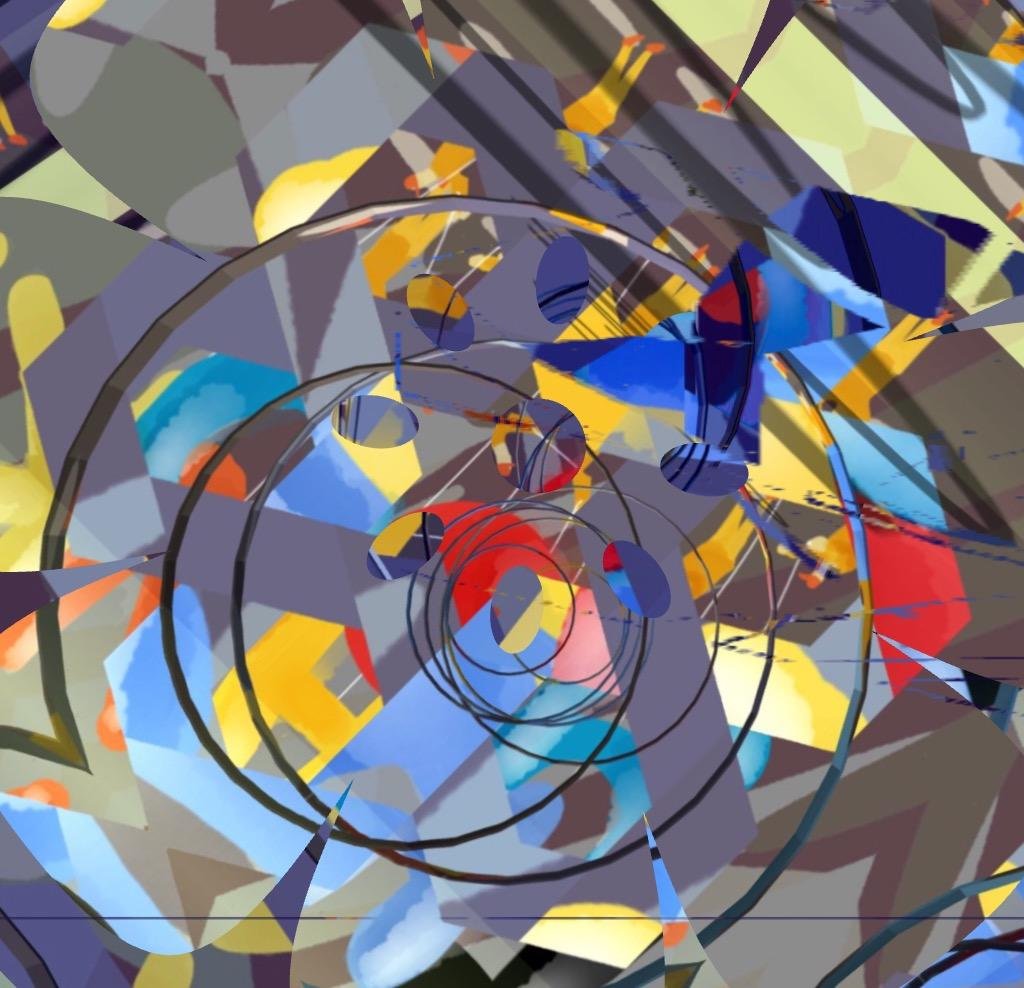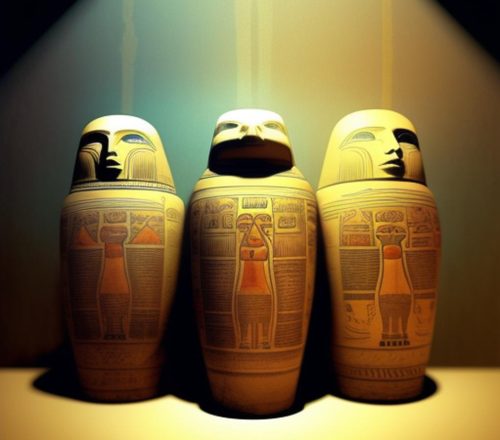
Table of Contents
Egyptian color palette
The Egyptian palette
has six colors
red -desher- heraldic color of the North, ochres
green -wadj , color of the Nile, Malachite
blue – khesbedj , irtiu- lapis lazuli, color of heavenly realms
yellow -kenit, khenet- the golden sun, ochres and oxydes
black -khem, kem- the black land, carbon
white -shesep, hedj- heraldic color of the south, chalks and gypsum
All made from mineral compounds
Semi-precious gemstones
Chosen for their symbolism
Vibrant colors
Even after thousand years
still shining
Eternal beauty
The color palette explained
The ancient Egyptians had a rich and symbolic color palette that played a crucial role in their art, hieroglyphs, and religious practices. Here are six key colors, their meanings, and illustrations of their uses:
1. Red (Deshret)
- Meaning: Red represented chaos, disorder, and the desert but also symbolized life and victory in battle.
- Use: Often used for the representation of the god Seth and the desert itself. It could also signify protection (e.g., red was sometimes painted on the bodies of the dead).
Illustration:
Imagine the walls of temples adorned with depictions of battles and gods, where the warriors and enemies are often painted in striking red.
2. Blue (Iryt)
- Meaning: This color symbolized the Nile, water, and fertility. It was associated with creation and rebirth.
- Use: Used to depict the sky and water, often seen in the decorations of coffins and jewelry to signify protection and life.
Illustration:
Consider a scene in a tomb with a blue background representing the Nile River, surrounded by lush vegetation and deities.
3. Green (Khad)
- Meaning: Green stood for fertility, rebirth, and regeneration. It was also linked to the vegetation that flourished along the Nile.
- Use: Commonly used for representations of Osiris, the god of the afterlife, who was often depicted with green skin to symbolize resurrection.
Illustration:
Imagine a sarcophagus painted green, decorated with images of Osiris, surrounded by symbolically fertile scenes.
4. Yellow (Khenet)
- Meaning: Yellow represented the eternal and indestructible, often associated with gold and the sun.
- Use: Frequently used to depict divine figures, particularly in art related to gods and pharaohs, as it represented their immortal nature.
Illustration:
Visualize a pharaoh depicted in yellow-golden hues, signifying his divine status, adorned in golden jewelry and surrounded by symbols of eternal life.
5. Black (Kemet)
- Meaning: Black symbolized the fertile soil of the Nile and was associated with rebirth and the afterlife.
- Use: It was often used to depict the fertile land and also for the skin of the god Osiris, emphasizing rebirth.
Illustration:
Picture the rich black soil depicted in artwork alongside images of Osiris, highlighting the significance of the afterlife and regeneration.
6. White (Hedj)
- Meaning: White symbolized purity, peace, and cleanliness. It was often associated with the sacred and the divine.
- Use: Frequently used in religious rituals and the garments of priests, reflecting their purity and dedication to the gods.
Illustration:
Think of a priest ceremonially dressed in white robes, performing rituals in a temple surrounded by offerings, symbolizing purity and communion with the divine.
Summary
The ancient Egyptian color palette was not merely aesthetic but deeply intertwined with their beliefs, culture, and religion. Each color had particular meanings and was used purposefully in art and decoration to convey specific messages about life, death, and the divine.
The color palette and ancient Egyptian cosmetics
Ancient Egyptian cosmetics and color palettes were integral to their culture, serving both aesthetic and practical purposes. Here’s a closer look at the colors and makeup used by the ancient Egyptians:
Color Palette:
Black: Symbolized fertility and the richness of the Nile silt. It was often made from kohl (a mixture of soot and other ingredients) and was used for both eyeliner and eye decoration.
Green: Associated with fertility, rebirth, and the afterlife. Green pigment was often made from malachite, a copper carbonate mineral.
White: Represented purity and was made from lead or chalk. White was used for both skin tone cosmetics and to highlight certain facial features.
Red: Symbolized power and life, often associated with the goddess Hathor. Red ochre was a common pigment used in makeup.
Blue: Represented the sky and the Nile. Made from natural minerals, blue pigment was used less frequently but was highly valued.
Yellow: Associated with the divine and eternal, yellow was often made from ochre and used sparingly.
Makeup Practices:
Kohl: Used to outline the eyes, protect against the sun, and ward off infections. Kohl was made from galena (lead sulfide) and was often applied in thick lines.
Eye Shadow: Green and blue pigments were often used to enhance the eyes, sometimes applied above and below the eyelids.
Lip Color: Red ochre or other pigments were used to stain the lips, often in vibrant hues to symbolize health and vitality.
Face Powder: Made from white minerals, it was used to create a fair complexion, reflecting societal ideals of beauty.
Perfumes and Oils: Fragrant oils were used not just for scent but also for moisturizing the skin. Ingredients included myrrh, cedar oil, and various flowers.
Cultural Significance:
- Spiritual Beliefs: Makeup was often thought to have protective qualities, particularly against evil spirits. Eye makeup was believed to invoke the protection of deities like Horus.
- Social Status: The use of cosmetics could signify wealth and status. Wealthier individuals had access to a wider variety of products and colors.
- Art and Decoration: Makeup styles were often depicted in art and hieroglyphics, showcasing its importance in daily life and rituals.
Conclusion:
Ancient Egyptian makeup was a blend of art, spirituality, and practicality, reflecting their beliefs about beauty, health, and protection. The color palette was rich and varied, with each hue carrying deep symbolism that resonated throughout their culture.
Shop Corner
Egyptian color palette on Amazon
Some videos
Colors and art of ancient egypt, a survey
A colorful story of Egyptian history
Thank you for likes, shares and comments
Take time to learn
Invest in your future
Embark on a journey into the realm of affiliate marketing and craft your own website within a vibrant, supportive community. Join me in this adventure, where you can begin as a free starter and stay as long as you desire. Enjoy complimentary hosting and foundational teachings to set you on your path. For those with advanced skills, opportunities to elevate your expertise await. Take a moment to explore and witness the magic for yourself!





The beauty of Egyptian colors has no rivals.
Vibrant light for all to see
And the make-up of eyes refined!
Em hetep On !
Almond
Almond!
Thank you for your comment.
Let us share the beauty of ancient Egypt!
Em Hetep
on
This is very interesting to me!
No orange, indigo, or violet as in the color spectrum, but it makes a lot of sense that, before we were able to ship materials all over the world, the Egyptians, like many native peoples, used the minerals in their region to create color!
I am from the Lake Tahoe region and the Washoe tribe that originally inhabited this area would use the bark of the Red Fir tree to create a potent red/burgundy dye.
Thanks for sharing!
Hi Tucker!What a wonderful story you have shared with us! I love it! Yes… the ancients used minerals and natural chemicals to color and dye… no matter where they lived. And each nation has its own palette… there is much we can learn from the ancients … and for me natural colors are the most healthy also… em HetepStay in peace